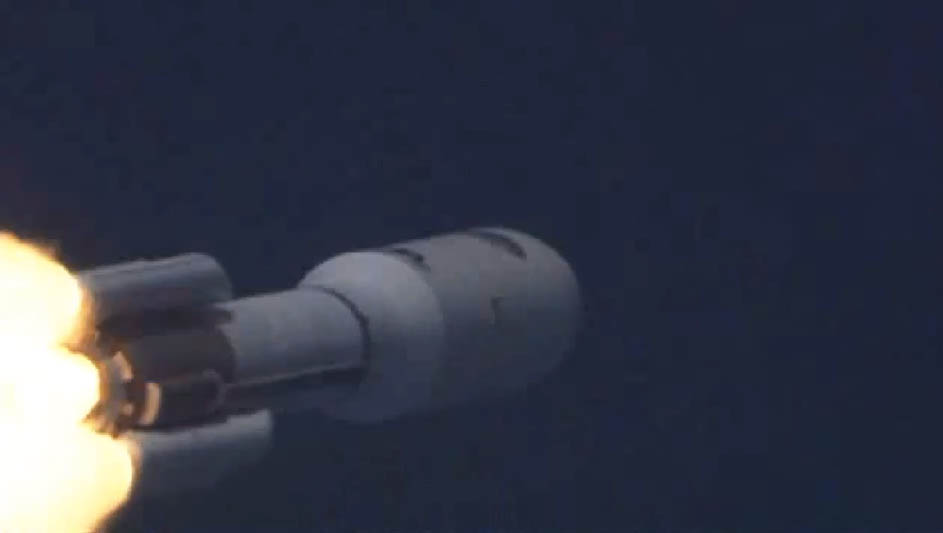Important to have female superhero: Gal Gadot on Wonder Woman
Mar 23, 2016
She also admitted that die-hard fans of the original comic book heroine criticized her new costume as well as her figure. The series was regarded as one of the most successful attempts to adapt the DC character for mainstream media.
Adele twerks for sold-out London crowd
Mar 23, 2016
Adele fears her "enormous" butt might break her back one day when she is twerking. However, it wasn't the first time someone got engaged during her show.
Maine State Troopers honor fallen Ma. Trooper
Mar 23, 2016
Mourners, including law enforcement from across the nation, ushered the body of Massachusetts State Trooper Thomas L. The Massachusetts State Police said Clardy is survived by his wife and six children between the ages of 4 and 17.
Manchester United pre-season tour to take place in China
Mar 23, 2016
However, there are no details yet released regarding the matches for the football club. City are also touring China and so could face United there.
Spartans, other upsets mean time to reboot NCAA Tournament
Mar 23, 2016
There were also 13 upsets in the first round of the 2001 tournament , including 15-seed Hampton's victory over Iowa State. In one of the wildest days in tournament history, Friday saw six more lower seeded teams advance to the second round.
Hulk Hogan wins $25 million in punitive damages
Mar 23, 2016
The Florida jury that awarded Hulk Hogan $115 million last week was given a measure about the depth of the defendants' pockets. The jury came down hard on Gawker , its owner, Nick Denton , and then editor-in-chief, A.J.
Cruz calls for Muslim surveillance in US, sparking criticism
Mar 23, 2016
Bernie Sanders said in a statement that the attacks were "another cowardly attempt to terrorize innocent civilians". Hours after the attacks in Brussels, rival Republican candidate Donald Trump tweeted out the following statement.
Kansas lawmakers put new school funding plan on fast track
Mar 23, 2016
They had asked the high court to delay preparing for this year's election until it ruled on their challenge. The newly drawn 4th District is a better fit for state Sen.
Explosions Rock Brussels Airport
Mar 23, 2016
Belgium's state news agency reported that shots were fired and shouting in Arabic was heard before the explosions at the airport. At least 31 people were killed and almost 190 wounded in the two airport bombings and another in the Brussels subway system.
Trump faces challenge in Utah vote but could net delegates
Mar 23, 2016
Cruz has campaigned at a number of events throughout the state, while Trump held a large rally outside Phoenix over the weekend. John Kasich, were also fighting in Arizona on Tuesday to stop the NY billionaire from building an insurmountable delegate lead.
Nobel laureate Suu Kyi inducted in Myanmar Govt.
Mar 23, 2016
Myanmar was governed by successive military juntas from 1962 and by a military-backed, nominally civilian government from 2011. Local media in Myanmar have said she will become foreign minister , although this has not been confirmed.
Dodgers' Andre Ethier out 10-14 weeks with fractured tibia
Mar 23, 2016
X-rays that day revealed no broken bones but the Dodgers said Tuesday that a follow-up CT scan showed the fracture. Ethier, 33, appeared in 142 games for the Dodgers last season, hitting.294/.366/.486 with 14 home runs and 53 RBI.
Carnival sets sail for Cuba
Mar 23, 2016
The Carnival Corp . voyages will travel to and from PortMiami in Miami with stops in Havana, Santiago de Cuba and Cienfuegos. It has been affirmed that the Carnival Cruise ships are among the lucky ones to be granted access to roam the coast of Cuba.
Late tip gives Notre Dame 76-75 win over Stephen F. Austin
Mar 23, 2016
The lead never was more than seven points for either team . "When we need to, we always feel like we can rely on our offense". Walkup made one of the most impressive plays of the game, somehow avoiding the out-of-bounds marker while nailing this layup.
South Korea registers 1st case of Zika virus
Mar 23, 2016
DPH advises pregnant women or women who may get pregnant to postpone travel to countries where ZIKA virus transmission is ongoing. The infected patient is now being treated in a negative pressure isolation room at Chonnam National University Hospital.


